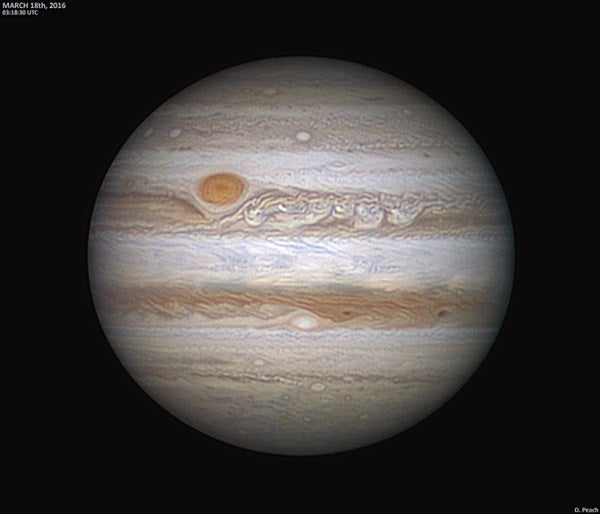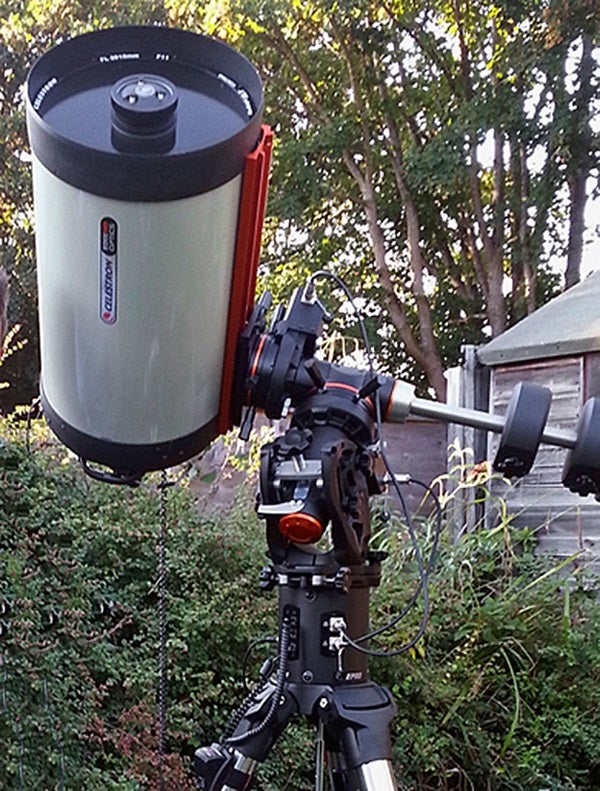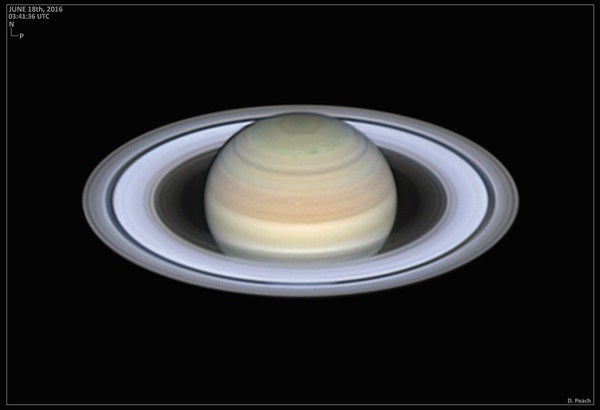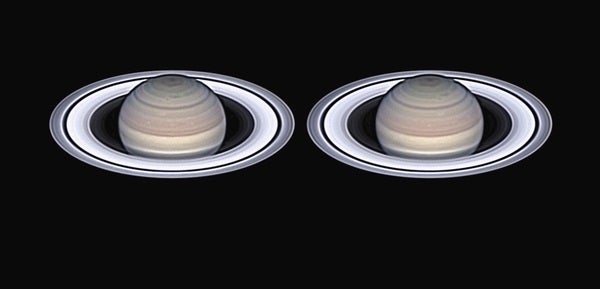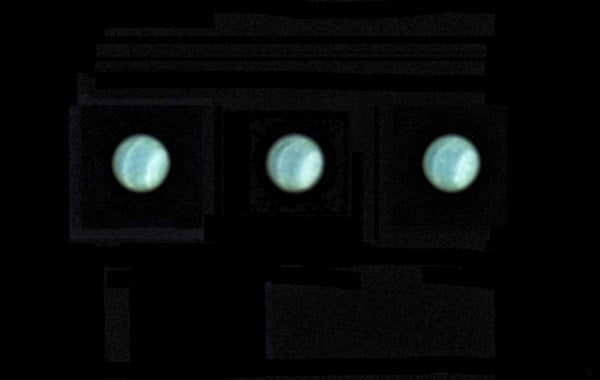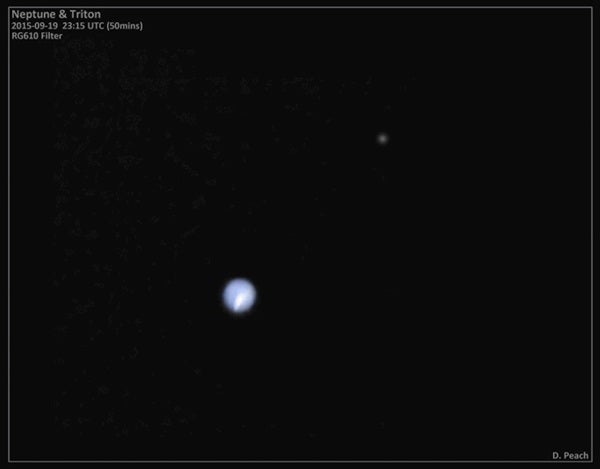Photographing the planets has long been a mainstay of both amateur and professional astronomers. It wasn’t so long ago that images from Voyager were wowing astronomers and scientists while amateurs struggled with photographic film to capture clear images of our nearest neighbors. It’s fair to say they were falling well short of not only the images spacecraft were taking, but even the sketches visual observers were recording with pencil and paper.
Since then, a revolution has occurred within this field of astronomy. Gone are the days of blurry and fuzzy photographs showing little fine detail. Major leaps in technology have enabled today’s amateur astronomers to produce images better than the best film photographs ever obtained with the world’s largest telescopes.
Telescopes come in many designs, shapes, and sizes, and selecting the right one for high-resolution imaging is important. In general, almost any good-quality telescope can produce great images, but certain designs are more favored than others. Today the most popular choices among experienced amateurs are large-aperture Newtonian or Schmidt-Cassegrain telescopes. These provide plenty of light-gathering power at affordable prices and, in experienced hands, can produce highly detailed images.
With modern cameras, even a 6-inch telescope can record considerable detail on Jupiter, while larger apertures are needed for Saturn, Uranus, and Neptune. Regardless of the type of telescope you decide to use, there are several key points to consider from a telescope/hardware perspective:
• Collimation of the optics. This is vital, especially with reflectors. Many guides are available online and are often provided with the purchase of a new telescope. Also keep in mind that it is a good idea to check the telescope collimation regularly, especially if you store it indoors and must move it outside each time.
• Thermal equilibrium. Allow the telescope as much time as possible to reach the same temperature as the outside air. This is especially important for larger apertures.
• Focusing. Do not fight an inadequate focusing mechanism, such as the standard focusing knob on a Schmidt-Cassegrain. Invest in a decent motorized system that allows fine focusing adjustments without touching the telescope.
• Usability. Overlook this at your peril! Nothing is worse than ending up with a telescope that is difficult and cumbersome to use. Choose one that you think you’ll be able to use easily and frequently.
• Focal length. Invest in a high-quality Barlow lens to increase your telescope’s focal length and image scale. Aim for an f-ratio between f/20 and f/30.
• Dispersion. Planets low in the sky are affected by an atmosphere-induced effect, known as optical dispersion, that causes their light to spread out into a spectrum. A dispersion corrector can remove the deleterious effects and help sharpen the view.
Cameras, filters, and software
Camera technology is a fast-moving field and is primarily responsible for the vast leaps in image quality over the past decade. Gone are the slow transfer rates of old CCD cameras, when a photographer could obtain perhaps only one image every few seconds. The best cameras in use by amateurs today can shoot at rates of more than 100 frames per second (fps). All typically operate via similar software packages that allow control over important settings such as exposure, frame rate, and gain.
Any serious planetary observer should own a set of filters to image in different wavelengths. Longer-wavelength filters, such as infrared (IR), allow us to see deeper into planetary atmospheres, while shorter-wavelength filters focus on the high-altitude regions. Also available are specialized filters that focus on specific absorption bands. By far the best for planetary imaging is the 889-nanometer methane band filter. This narrowband IR filter focuses on sunlight absorption due to methane in the atmospheres of the giant planets and is especially useful for Jupiter and Saturn.
One particularly nice aspect of planetary imaging today is that many software packages you’ll need are available for free. Below you’ll find a few of the key titles:
• Autostakkert! For aligning and stacking the frames taken by today’s planetary cameras, this software leads the way. (www.autostakkert.com)
• WINJUPOS. Originally intended to measure the position of atmospheric features within the jovian atmosphere, this program now contains sophisticated processing routines that allow imagers to compensate for rapid planetary rotation, thereby creating higher-quality images. (http://jupos.org/gh/download.htm)
Image the giant
The solar system’s largest planet is the jewel of the night sky. Jupiter is one of the few truly dynamic astronomical objects that can be studied closely with amateur equipment. Its huge size means it presents a large apparent disk as seen from Earth, and even small telescopes can show considerable detail. It also rotates rapidly — a jovian day lasts 9 hours, 55 minutes — so you can see much of the planet during just a single night under the right circumstances.
Having a smooth routine in place is really important to use every second for RGB imaging of Jupiter, and this only comes from practice. Such a routine also helps render the tones of the planet accurately. Of course, for those using color cameras, the procedure is far less frantic. Using image de-rotation in WINJUPOS allows a much longer capture window overall (up to 15 minutes), making the process much easier.
In terms of video frame rate, shooting through the R and G filters at around 80 fps should work well. You’ll have to use a slower rate when you image through a B filter, though. Because most camera chips are more sensitive to red light than blue, your frame rate in blue may need to be as much as one-half that as with the other filters. Finally, you’ll need to stack at least a thousand frames to create a reasonably noise-free result that will allow sharpening.
Narrowband methane filters also can help bring out lots of detail. Such filters are typically quite expensive but a worthwhile investment for those keenly interested in imaging Jupiter with the highest quality.
Image the ringed world
With its captivating ring system, Saturn is without question one of the most spectacular sights visible through any telescope. Larger amateur scopes can capture a wealth of detail across the globe and rings.
Minor storms appear as small bright spots and are typically quite frequent. Larger storms also can erupt, such as during the 2011 apparition when observers were treated to a planet-encircling storm, the largest seen on Saturn in more than 20 years. The ring system also shows many interesting details, such as brightness variations, and occasionally you can image even the famous spoke features. When the rings are presented edge-on to Earth, large scopes will allow you to capture shadow transits of the saturnian moons easily.
The author captured Neptune and Triton September 19, 2015, at 23h15m UT (above) and five days later on the 24th. The earlier shot was a 50-minute exposure, and the later one was 25 minutes. Both images show bright storms. Amateur astronomers have discovered several such bright spots in recent years.
Saturn rotates more slowly than Jupiter, and at only half the apparent angular diameter (not including the rings), a far more generous capture window is usable. For a single capture, 3 to 4 minutes is usable, and for a total RGB capture, twice this length works fine. It can help to take a series of images over a 30-minute period to show any small spots or features that move with rotation, because sometimes these features are not immediately apparent.
Image the ice giants
The distant ice giants have been two largely neglected worlds in terms of amateur study, although this has started to change. At their great distances, they present only tiny disks even through large telescopes. Both planets exhibit interesting activity with occasional bright storms, though any hope of capturing such events is reserved for those using large apertures.
Both planets are also challenging objects to photograph well at high resolution. RGB or color imaging serves little purpose with these planets because much of the transient activity and even the belt and zone patterns are best seen in near-infrared wavelengths.
An important filter to use on these planets is a near-IR 600nm long-pass filter. For larger apertures, a 700nm IR filter (which passes somewhat less light) works well. These filters stand the best chance of picking up atmospheric detail while still delivering a bright enough image that is realistically usable with amateur-size telescopes. All of the most detailed images of these planets produced in recent years have been through IR filters. Because both planets are so distant and rotate fairly slowly, time windows of around 15 minutes are usable for single captures, and you should try to stack plenty of data into each single image — up to 30 minutes’ worth works well. Bright storms have been detected on both planets in recent years, most of them discovered by amateurs.
Not just pretty pictures
While the majority of deep-sky work is primarily aesthetic in its appeal, this is not the case with planetary images. Amateur work on the outer planets remains important to professional researchers, and in recent years many discoveries have been made using amateur data. Science based on amateur images is also more detailed and credible than it has ever been. Image quality today is good enough that detailed papers about the atmospheric dynamics of Jupiter have been written based purely on the analysis of amateur data.
With recent advances in camera technology, we have moved even further, discovering storms on the distant worlds of Uranus and Neptune.
Indeed, amateurs continue to make significant discoveries and contributions to studying the four planets of Voyager.

